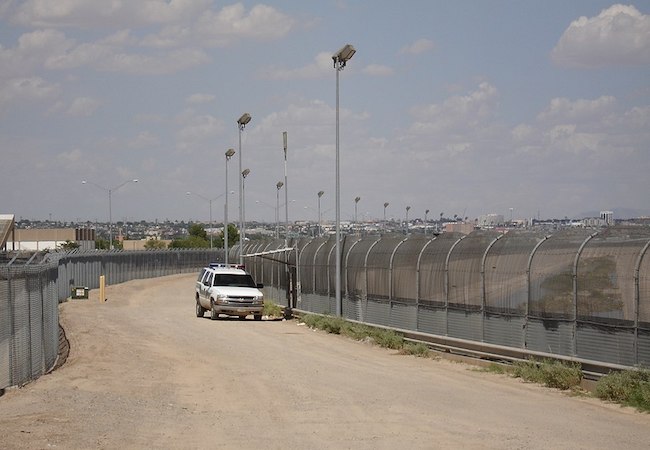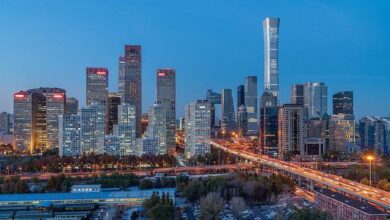
By Raphael Benaroya
Many on the political left have called for the U.S. to maintain open borders. Democrats have specifically spoken out against border barriers: Speaker Pelosi said that “a wall is an immorality;” former Rep. O’Rourke stated he would “take the wall down” in El Paso, Texas; and many shout ”build bridges, not walls” as their battle cry.
Meanwhile, over 100,000 undocumented people—many without any identity documents and all without advance criminal and medical background vetting—crossed the U.S.-Mexico border in March. That is the highest monthly figure in 12 years.
I sympathize with those trying to forge better lives for themselves in the U.S, and I wholeheartedly support legal immigration—I am an immigrant and naturalized U.S. citizen myself. But open borders?
Let’s contrast the idea of open borders with what actually happens now – not to people who try to enter the country and stay illegally, but to U.S. citizens coming home from abroad.
I recently flew home to New York after a short business trip to Europe. I am a “trusted traveler,” enrolled in the Global Entry program, which is supposed to streamline and expedite the security process. Although I have been through this re-entry procedure hundreds of times, I now decided to keep track of the security touchpoints along the way—to contrast it with the idea of much-discussed open borders.
Security screening started overseas, before I even stepped onto the plane. During check-in, my passport and flight number were confirmed—not just to issue a boarding pass, but also to give U.S. Customs and Border Protection (CBP) a heads-up to expect me at a given time and a particular port of entry. Then, to gain access to the departure gate, I went through the familiar airport process: passport and boarding card checked again, and carry-on and body scanned.
On the plane, like all other passengers, I was asked to complete a “customs declaration” card. Fortunately, I knew that JFK, my point of re-entry to the U.S, has an Automated Passport Control (APC) system, so I didn’t have to bother filling out the paper declaration.
After deplaning, I was directed to walk down a long, walled-off corridor (yes, ironically, a wall on each side), sealed off from the rest of the airport. This quarantine is designed to prevent smuggling and illegal border-crossings. At the end of the enclosed walkway, I arrived at the next security checkpoint: U.S. passport control.
Since I am a Global Entry “trusted traveler,” was it going to be clear sailing now? Not so fast!
I was steered to an APC booth, where a screen prompted me to scan my own passport, complete the customs declaration card electronically, and have my picture taken with the machine’s built-in camera. The kiosk then printed a paper receipt, which one would expect to be a “go free” ticket. Again, not so fast!
I presented my receipt to a CBP agent, who directed me to a line for a CBP officer sitting in a booth. (What?! Not so “trusted?!”) When my turn came, the CBP officer questioned me about my trip and belongings, checked my passport again, and made a mark on my customs receipt.
After I exited the booth, another CBP officer looked me over and briefly examined my slip.
As my fellow passengers and I gathered around the baggage carousel, yet another CBP officer mingled among us—with a dog. I assume they were looking for drugs, food, or other contraband. The dog gave my bag a good sniff, but didn’t seem to detect anything of interest.
Finally, with bags in hand, I proceeded to another line for the final customs checkpoint. Here, one last CBP agent checked and collected my customs receipt and motioned me away. “Welcome home,” I thought to myself.
So, to sum up: as a passport-carrying U.S. citizen coming home from abroad, I was examined by seven border control agents, two scanners, at least three computers, and a dog. And these were only the measures I could see—I am told there are other, hidden measures.
Let me emphasize that all along the way, the process was efficient and courteous, as well as stringent. I have absolutely no complaint about the way I was treated. And I am not questioning the value, necessity, or quality of these layers of security. To the contrary, I think this process is vital for the security of all Americans. And that’s my point.
When a “trusted” U.S. citizen like me—a background-checked Global Entry member—is required to pass through so many layers of security, how can anyone suggest that 100,000 unvetted strangers crossing an open border each month is a good idea?
Raphael Benaroya is an American businessman. He serves as Vice Chairman of Business Executives for National Security (BENS), a Washington, D.C.-based non-partisan NGO.




